
* In the 1980s, the USA began to move to a new generation of battlefield surface-to-surface missiles, originally under the US Multiple Launch Rocket System, intended as a long-range barrage bombardment system. A parallel effort worked on an improved follow-on to the Lance, the Army Tactical Missile System, also to be fired by the MLRS. These missiles and launch systems have been produced in quantity and continuously improved -- and have led to a new generation of long-range precision munitions, the Precision Strike Missile and the Dark Eagle.
* In the early 1970s, the US was confronted in Europe by a powerful Soviet military that was superior in numbers -- and relied heavily on barrage rockets. The US Army had never been very enthusiastic about barrage rockets, believing conventional artillery was more precise and economical, but the Soviets relied upon it. Using truck-mounted multiple launch rocket systems (MLRS), the Red Army could blast large areas of ground in a short period of time.
The US Army decided that there was a place for barrage rockets after all, and issued a request for proposals for a "General Support Rocket System (GSRS)" to industry in 1975, with the proposals whittled down to two in 1977, with prototype development contracts awarded to Boeing Aerospace and Vought. Each was to build three prototypes for evaluation.
The program was modified in 1978 to take on European partners. In 1979 the USA, West Germany, France, and the United Kingdom signed a memorandum of understanding for joint development and production of GSRS. The program was redesignated "Multiple Launch Rocket System" in late 1979; it might have been better to give it a more distinctive name, but that wasn't what happened. It is referred to as "US-MLRS" here for clarity, though that was never an official designation. In any case, the prototype evaluation took place from late 1979 into early 1980, with Vought being declared the winner. Low-rate production of the US-MLRS began in 1982, with introduction to US Army service in 1983. The US Marines would also adopt the US-MLRS, though it's not clear when they did.
* The original delivery system for the US-MLRS was the "M270 MLRS Self-Propelled Loader-Launcher (SPLL)" -- the M270 being an armored tracked vehicle, based on the chassis of the Bradley Fighting Vehicle. It had a box launch unit, officially a "Launcher-Loader Module (LLM)", that hinged up from the rear and pivoted. The rockets came in "launch pods" of six rockets each, with the box launcher capable of accommodating two rocket sixpacks. The rockets could be fired individually or in salvo.
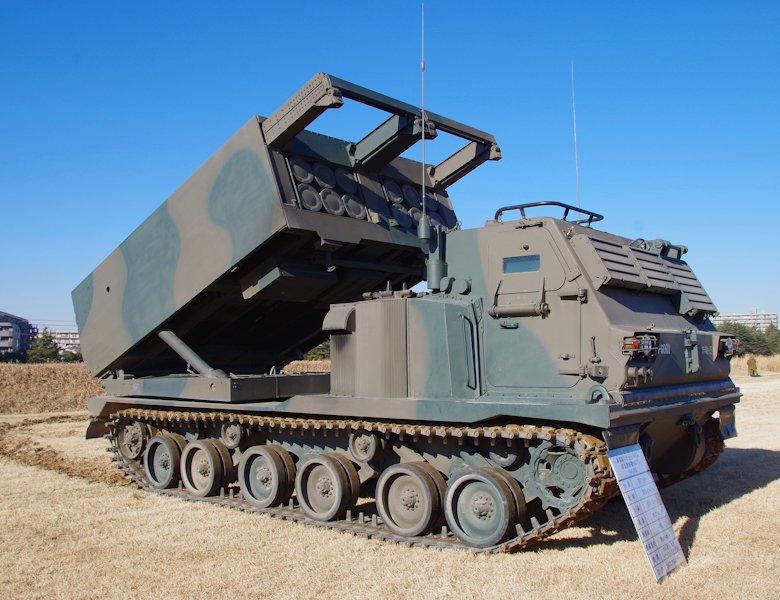
The box launcher could also carry two much bigger and more formidable "ATACMS" rockets, with ATACMS discussed later. The box launcher had arms that could be extended and used to winch up rocket pods; an M270 could be reloaded and fired again in a matter of minutes, meaning that it could effectively fire missiles as fast as they were supplied to it. Rocket pods were supplied to an M270 using a variant of the "Heavy Expanded Mobility Tactical Truck (HEMTT)" -- a four-axle heavy hauler, configured to carry four pods and fitted with a crane to load or unload them. The HEMTT vehicle could also pull a trailer with four more pods, for a total of eight pods.
The M270 had a crew of three -- crew chief, gunner, and driver -- and was armored for protection against small-arms fire and artillery fragments. It featured a fire-control system with a computer, relevant data being entered by the gunner, usually obtaining cues by radio. The M270 had a weight of about 24,030 kilograms (52,900 pounds) when loaded for action. Incidentally, there was little storage space in the vehicle cab, so auxiliary items ended up being carried on the roof of the cab.
At the outset, the M270 used the "M26" rocket -- an unguided, spin-stabilized munition, with four pop-open wrap-around tailfins. It had a warhead of 644 M77 "Dual-Purpose Improved Conventional Munitions (DPICM)" anti-personnel / anti-materiel grenades. They were like little cans, with a fragmentation case, plus an explosive filler with a hollow in the front to focus the blast in a jet through armor; the M77 had a cloth strip in the rear to make it fall nose-down.
___________________________________________________________________
M26 US-MLRS ROCKET:
___________________________________________________________________
length:
3.94 meters (12 feet 11 inches)
diameter:
22.7 centimeters (8.94 inches)
total weight:
306 kilograms (675 pounds)
warhead weight:
156 kilograms (344 pounds)
range:
32 kilometers (20 MI / 17 NMI)
___________________________________________________________________
The first European-built M270s were delivered in 1989. About a dozen countries obtained M270s, either new-build or second-hand, including Bahrain, Britain, Denmark, Egypt, Germany, Greece, Finland, France, Israel, Italy, Japan, the Netherlands, Norway, South Korea, and Turkey. About 1,300 M270s were produced, the last being delivered -- to Egypt -- in 2003.
Germany was the biggest foreign user and had their own M26 rocket variant, carrying a payload of 28 "AT2" anti-armor mines. The AT2 weighed 2.2 kilograms (4.85 pounds) and was in the shape of a domed can, with a set of legs around the base. The mines were deployed from a rocket in four sets of seven mines, with each mine deploying a little parachute to break its fall. Once a mine landed, its legs were actuated, setting the mine upright, with a wire deployed from the top; a tank running over the wire set the mine off, the mine blasting a penetrator into the bottom of the tank.
Incidentally, at the outset the MLRS rocket was defined as having a smaller diameter than it would have in production rockets; the Germans had lobbied for the larger diameter so the rocket could be used for minelaying. Maximum range of the M26-AT2 rocket was 38 kilometers (24 miles). It appears Italy also adopted the M26-AT2 rocket; it is not clear if any other users did.
* The first major use of the M270 was in Operation Desert Storm in 1991, the liberation of Kuwait from Iraqi occupation forces. The US deployed over 230 MLRS systems, while Britain deployed an additional 16. The US-MLRS acquired the nickname "steel rain" or "grid-square eraser system", since a full volley of 12 rockets could in principle devastate an entire map grid square.

Later assessments of the performance of the DPICM warhead suggested that its effectiveness was over-rated. The DPICM grenades had a high dud rate, particularly whey then impacted into soft desert sand; that not only reduced their effectiveness, it also meant a troublesome de-dud process later. The duds were a threat not just to civilians, but also to friendly troops.
* The original M26 rocket underwent improvements -- starting with the "M26A1 Extended-Range MLRS (ER-MLRS)", which used the improved "M85" grenade that was supposed to have a lower dud rate, and reduced the number of grenades to 518. That allowed the booster rocket to be stretched by 27.4 centimeters (10.8 inches), extending the range to a maximum of 45 kilometers (28 miles). M85 development ran into snags, however, and so a limited number of ER-MLRS rockets were produced with the old M77 grenades as an interim measure, the rocket being designated "M26A2".
Over a half-million M26-family rockets were built to end of production in 2001. An "M28" practice rocket was also built, being an M26 but with a "warhead" featuring ballast and three smoke bombs. It was later replaced by the "M28A1 Reduced Range Practice Rocket (RRPR)", with a blunt nose that cut range in half for safe training on smaller field ranges. The M28A1 was later replaced in production by the cost-reduced "M28A2".
The M270 MLRS launcher proved useful again in the invasion of Iraq in 2003. "Shoot & scoot" tactics were not particularly useful, since the Iraqi Army quickly lost counter-battery fire capability, so the M270s tended to cluster together to be used as ad-hoc "fire bases".
* The reason that the M270 went out of production in 2003 was because it was then replaced in manufacture by the "M142 High Mobility Artillery Rocket System (HIMARS)" -- which was an MLRS launcher based on a three-axle truck with an armored cab, along with an updated fire control system (FCS). Confusingly, some photos show HIMARS prototypes without armored cabs, giving them a distinctly different appearance. It provided higher mobility than the M270, not requiring a transporter to take it cross-country -- though it could only fire a single rocket pod or ATACMS missile, half the load of the M270.

The new FCS was tailored to support next-generation MLRS rockets. In the 1990s, the US Global Positioning System (GPS) navigation satellite constellation had come of age, one consequence being the introduction of a new generation of guided weapons. In 1994, the US Army began work on the "Guided MLRS (GMLRS)" rocket, which used GPS guidance with an INS backup. Test launches were conducted from 1998, with introduction to service in 2005. GMLRS would see action in Iraq and Afganistan.
The "M30" GMLRS rocket carried a load of 404 DPICM grenades. Maximum range was 92 kilometers (57 miles). Externally, it looked just like the M26, except for four small control fins around the nose cone. At more or less the same time, the "M31" was also introduced, being just like the M30, but having a unitary blast-fragmentation warhead. The warhead had a weight of 90 kilograms (200 pounds) and featured a steel case. The old M26-series rockets were retired, with the DPICM warheads and (apparently) most of the rockets destroyed.
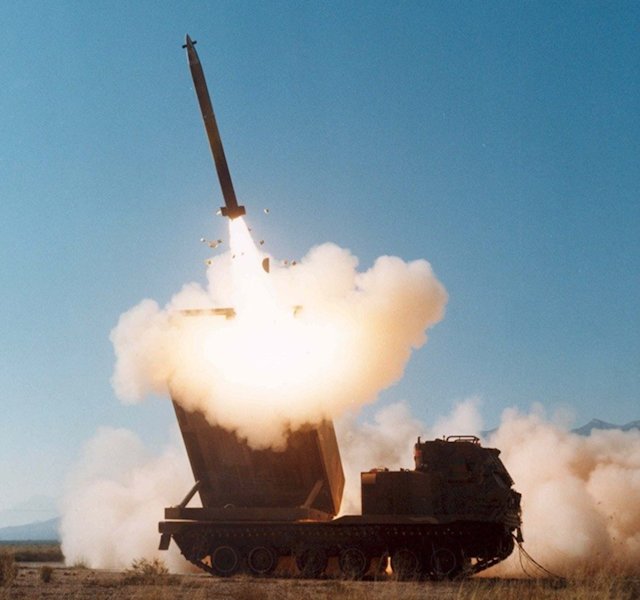
Only about 4,000 baseline M30 rockets were built, the last in 2009. Reservations about cluster munitions had reached a snapping point, and so the "M30A1" was introduced -- which had a unitary warhead, but with an airburst fuze and over 180,000 tungsten pellets. An "M31A1" was also introduced, the only major change being a new fuze that added an airburst option, to the existing impact and delay fuzing options. The "M30A2" and "M31A2" rockets were introduced in 2019, the major change in both being an "Insensitive Munition Propulsion System (IMPS)" -- meaning rocket motors not inclined to light up except when they're supposed to.
Incidentally, the Turks reverse-engineered the M26 rocket under the SAGE 227 project and test-flew their own guided version. They didn't field it, but they did develop TRG-230 & TRLG-230 230-millimeter guided rockets that may have leveraged off of it. The Israelis also developed their own variants of the M26, including the "Trajectory Corrected Rocket", with an improved guidance system; a GPS-guided version, the "Romach"; and the "Ra'am Eithan (Strong Thunder)", which was the Trajectory Corrected Rocket with a lower percentage of duds.
Along with the GMLRS rockets, GMRLS led to the update of the M270 launcher from 2005 to the "M270A1" configuration. It looked the same as the M270, but featured an "Improved FCS (IFCS)" -- not the same as the M142's FCS, possibly because of launcher hardware differences -- and an "Improved Launcher Mechanical Systems (ILMS)" to speed loading of rocket packs. It was initially fielded in 2002. Britain obtained a similar update to "M270B1" standard, also with the IFCS, the main change being an up-armored cab.
France, Germany, and Italy updated their M270s as well, but went more or less their own way on the effort. KMW of Munich modernized them, most importantly adding the "European Fire Control System (EFCS)" developed by EADS and Dornier, with versions updated as follows:
They could fire all the latest MLRS munitions, though the old submunition rockets were not supported.
GMLRS went into action with US forces in Iraq and Afghanistan, providing everything that was hoped for it. In 2012, the Army issued a contract to up-armor the M270's cab, and update the FCS to a "Universal FCS (UFCS)" for both the M270 and the M142 HIMARS. The story behind the UFCS is very confusing and hard to sort out, suggesting it didn't work out quite as planned. Sources mention an "M270C1" upgrade with the UFCS that didn't happen, while the Finns obtained an "M270D1" upgrade that had the UFCS.
* After the Russian invasion of Ukraine in early 2022 ran into a stubborn Ukrainian defense, the US and other NATO countries rushed weapons, typically older ones from stockpiles, to Ukraine to assist in the defense. The Russian drive on Kyiv was repulsed, but the Russians -- heavily assisted by mass artillery and indifferent to their own casualties -- slowly pushed back Ukrainian forces in the east of the country. That came to a halt in the early summer of 2022 when GMLRS launchers, primarily HIMARS but also improved M270s from Germany and elsewhere, went into combat in the early summer of 2022. GMLRS proved devastatingly effective, permitting precision strikes deep into the Russian rear, hitting supply and ammunition dumps, troop concentrations, and headquarters operations.
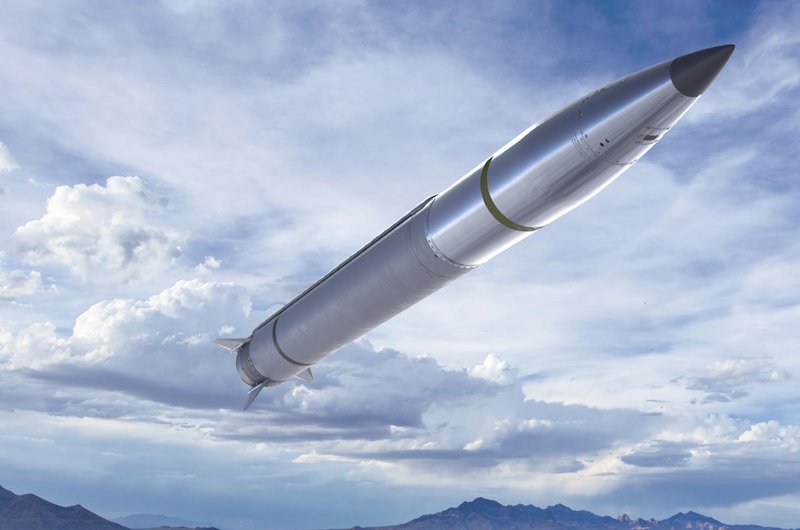
An "extended range" GMLRS was in the works at the time, with a range of 150 kilometers (90 miles) and test launches from 2021. ER-GMLRS visibly differed from GMRLS in deleting the nose control fins, instead using a new tail control-fin scheme. ER-GMLRS was not in production during the Ukraine War, but the "Ground-Launched Small Diameter Bomb (GL-SDB)", was considered for use in 2023. The SDB was a 112-kilogram (250-pound) glide bomb with GPS guidance and pop-out switchblade wings. Not all the M26 rocket boosters had been destroyed, and so they were mated to SDBs, being supplied and fired in rocket pods just like GMLRS.
However, by early 2023 the Russian invaders were jamming GPS all over the battle area, rendering the GL-SDB -- and the GMLRS -- ineffectual. Nonetheless, by mid-2024 it was becoming obvious, visible under the screen of very tight operational security, that smart munitions were proving effective again, with videos of SDBs in use in combat. It was unclear if GL-SDBs were in use as well. Exactly what measures were taken to overcome jamming is not clear, but there was a semi-active-laser (SAL) guided version of the SDB, and a much smarter "SBD II" with a triple-mode seeker, featuring SAL, millimeter-wave radar, and imaging infrared elements.
* In the meantime, a program was underway from 2019 to further update the M270 to "M270A2" configuration, including:
The US Army plans to upgrade all its M270s to M270A2s, including many baseline M270s that hadn't been upgraded to M270A1 standard. The British also decided to upgrade their M270B1s to M270A2 standard, with additional features including "Composite Rubber Tracks (CRT)", plus a vehicle camera and radar tracking system. The Israelis also developed their own improved M270, the "Menatetz", but little information is available on it.
BACK_TO_TOP* Even before the introduction of the US-MLRS, LTV had done work on a solid-fuel replacement for the Lance, designated "T-22", with a ring-laser gyro (RLG) guidance system that would provide unprecedented accuracy. It became an element in the DARPA Assault Breaker program, mentioned earlier, with the program focused on a ballistic missile for both ground and air launch. The effort was designated the "Joint Tactical Missile System (JTACMS)".
With Assault Breaker gradually fragmenting, the Air Force decided to give up on the air-launched ballistic missile to focus on an air-launched cruise missile. The US Army continued with the effort, with the program renamed the "Army Tactical Missile System (ATACMS)" -- quickly rendered as "Attack 'Ems". Ling-Temco-Vought (LTV) got the ATACMS development contract in 1986. Testing was completed in 1989, with the missile going into service in 1991. It was first used in combat in Operation DESERT STORM, the First Gulf War, with 32 expended.
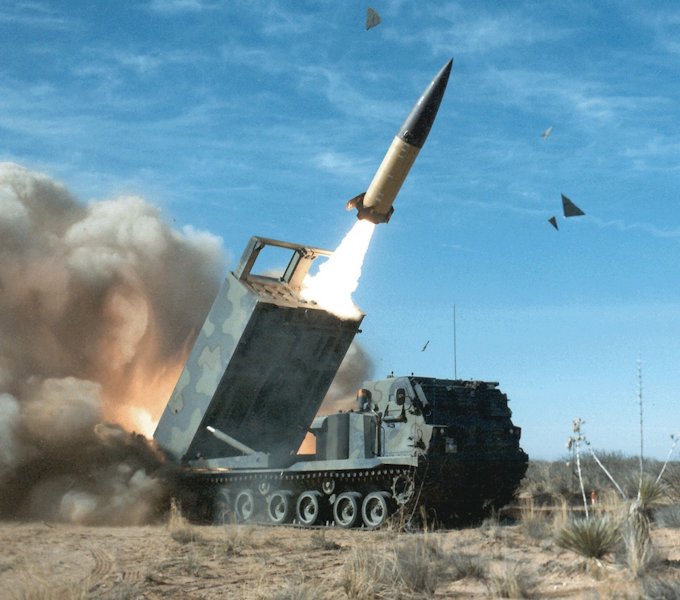
The original MGM-140A / M39 (ATACMS Block I) missile was a stubby spike with solid-fuel propulsion, four pop-out guidance fins, and a cluster-munition warhead consisting of 950 M74 Anti-Personnel / Anti-Materiel (APAM) bomblets. Total warhead weight was 560 kilograms (1,235 pounds).
___________________________________________________________________
MGM-140A / M39 ATACMS BLOCK I:
___________________________________________________________________
length:
4 meters (13 feet)
diameter:
61 centimeters (24 inches)
finspan:
1.4 meters (55 inches)
total weight:
1,670 kilograms (3,690 pounds)
warhead weight:
560 kilograms (1,235 pounds)
range:
165 kilometers (100 MI / 90 NMI)
___________________________________________________________________
Two ATACMS could be launched by an M270, with HIMARS able to launch one. The carriage pod for ATACMS was dummied-up with endplates to make it seem as if it were a pod with six MLRS rockets. Incidentally, an M270 could carry an ATACMS and a US-MLRS six-pack at the same time; the loads didn't have to be the same. 1,650 MGM-140As / M39s were built between 1990 and 1997, with both the US Army and Marines receiving them.
It was then replaced by the "MGM-140B / M39A1 / ATACMS Block IA" variant, with a smaller warhead consisting of 300 M74 APAM grenades and a weight of 160 kilograms (350 pounds), a maximum range of 300 kilometers (185 miles), and GPS guidance -- as required by its range, inertial guidance not having sufficient accuracy for such long shots. It appears that the enhanced range was only due to the smaller warhead, with no substantial changes to the rocket propulsion system. 610 were produced from 1997 to 2003. ATACMS were used in combat again during Operation IRAQI FREEDOM in 2003, with 279 M39s and 74 M39A1s fired.
There was work on the "MGM-140C / ATACMS Block II" variant, which was an MGM-140B fitted with a warhead carrying 13 "Brilliant Anti-Tank (BAT)" submunitions. BAT was yet another concept coming out of the Assault Breaker program -- being a glide bomb that was, in principle, able to identify and target enemy armor on its own with wingtip acoustic and an imaging infrared sensor. The first all-up test flight of the MGM-140C was in 1995, with the variant featuring a distinctly cylindrical warhead section, as opposed to the earlier ATACMS missile variants.
The variant was to go into service as the "MGM-164A" in 2003, but it seems BAT could not be made to work as well as hoped, and so the project was canceled in 2002. Some sources claim that a few dozen MGM-164As were produced, but they may not have been fielded. Existing BATs were fitted with a SAL seeker, and operationally used by the US Special Operations Command for another decade or so. There were also plans to build an improved "MGM-140D / ATACMS Block IIA" variant, but it didn't happen.
That meant the next version was the "MGM-140E", which actually went into service as the "MGM-168A / M48 / ATACMS Quick Reaction Unitary (QRU)". It was an MGM-140B with the 230-kilogram (500-pound) WDU-18/B penetrating warhead of the US Navy Harpoon antiship missile, redesignated "WAU-23B" for ATACMS. 176 MGM-168As were built from 2001 to 2005. 16 M48s were fired during Operation IRAQI FREEDOM, and a further 42 were fired during OPERATION ENDURING FREEDOM, the invasion of Afghanistan.
The M48 was, as the "Quick Reaction" label hints, an interim measure, with limited production. It led to the "M57", with much the same general characteristics, but with refined subsystems, with a visible improvement in CEP. A similar "M57E1" variant was produced by updates of old M39/M39A1 missiles, the only major change being fit of an airburst fuze. There was an effort from 2016 to develop a terminal-attack seeker to allow an ATACMS missile to hit a moving target, but the effort was abandoned.
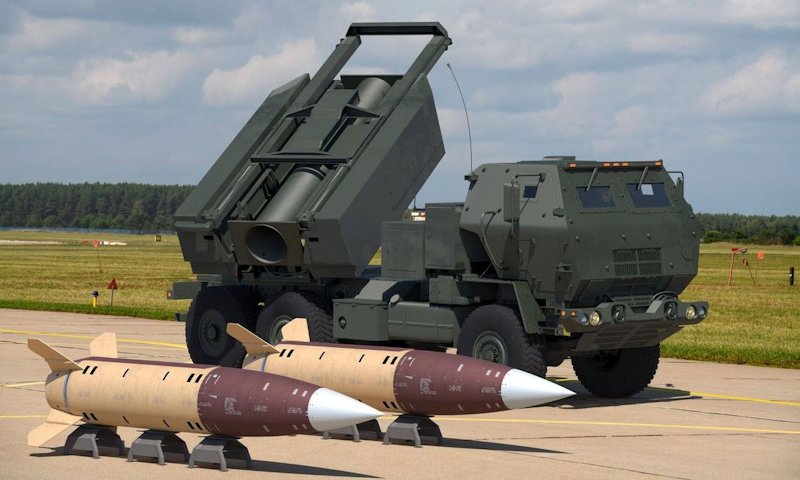
These days, the system is formally referred to as "TACMS", since the US Army is by no means the only user, but the "ATACMS" label persists, and its use is retained here for simplicity. Besides the USA, ATACMS have been obtained or are being obtained by Australia, Bahrain, Estonia, Greece, Lithuania, Morocco, the Netherlands, Poland, Qatar, Romania, South Korea, Taiwan, Turkey, and the UAE.
ATACMS is on the way out -- more on this later -- but it's going out with a literal bang in the Ukraine War. In 2022, the first year of the war, the US focused on delivery of GMLRS, judging that it was the better weapon for the tactical situation at the time. As mentioned earlier, in 2023 the Russians introduced wide-area jamming that GPS-guided munitions such as GMLRS and ATACMS useless, though a handful of M39 ATACMS that hadn't been upgraded were provided by the US and fired at Russian forces. By mid-2024, the countermeasures had been overcome and ATACMS were in considerable use, with suspicions that they had upgraded guidance systems.
* From 2016, the US worked on a "Precision Strike Missile (PrSM)" to replace ATACMS, with Lockheed Martin awarded the contract in 2020, with introduction to service in late 2023.
PrSM's range is given as 500 kilometers (310 miles) or more, with two per launcher pod instead of one as with ATACMS. The 500-kilometer range was set by the limits of the INF Treaty, which broke down in the face of Russian non-cooperation, so that range was a lower bound.
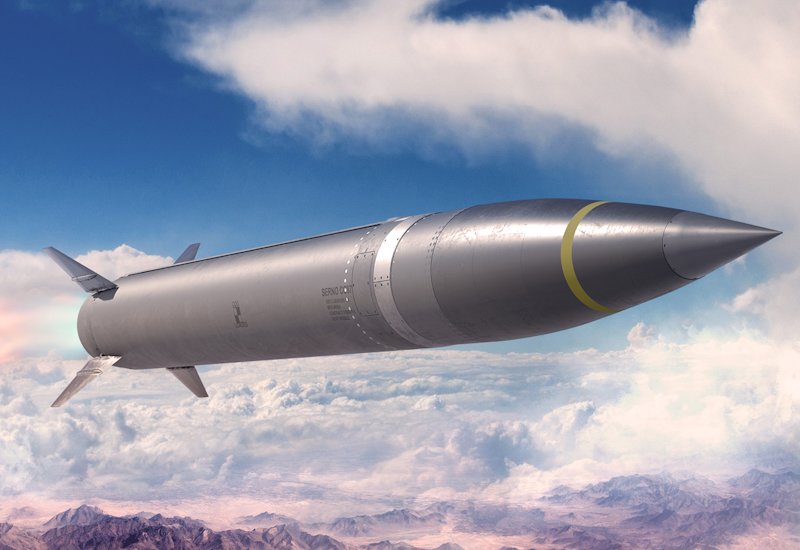
Initial deliveries were of "Increment 1" missiles, with a unitary warhead and GPS-INS guidance. The plan is to follow the Increment 1 missiles with "Increment 2" missiles, with an emitter-homing / imaging-infrared seeker to allow it to hit moving targets. It is intended to hit air-defense nodes and communications centers, -- and in particular naval vessels, its alternative name being the "Land-Based Anti-Ship Missile (LBASM)". It seems at least some Increment 1 missiles will be upgraded to Increment 2.
"Increment 3" will feature unspecified "enhanced" payloads -- possibly even swarms of drones, though nothing is known about it yet. Finally, "Increment 4" will have range extended to 1,000 kilometers (620 miles); it may have ramjet propulsion.
* Beyond PrSM, the US Army is working on deployment of the "Dark Eagle" -- more officially the "Long-Range Hypersonic Weapon (LRHW)", with a hypersonic glide vehicle (HGV) that can reach speeds of Mach 17, and a reported range of 2,775 kilometers (1,725 miles). It is propelled by a two-stage booster with a diameter of 98 centimeters (34.5 inches). The rocket vehicle is nondescript, resembling a big bullet, with the wedge-shaped HGV released from payload fairings. Dark Eagle is fired from a two-round TEL trailer. The Army is working with the Navy on the project, with the Navy working on a similar missile under the "Conventional Prompt Strike (CPS)" effort -- using the same rocket booster but, it appears, a different HGV.
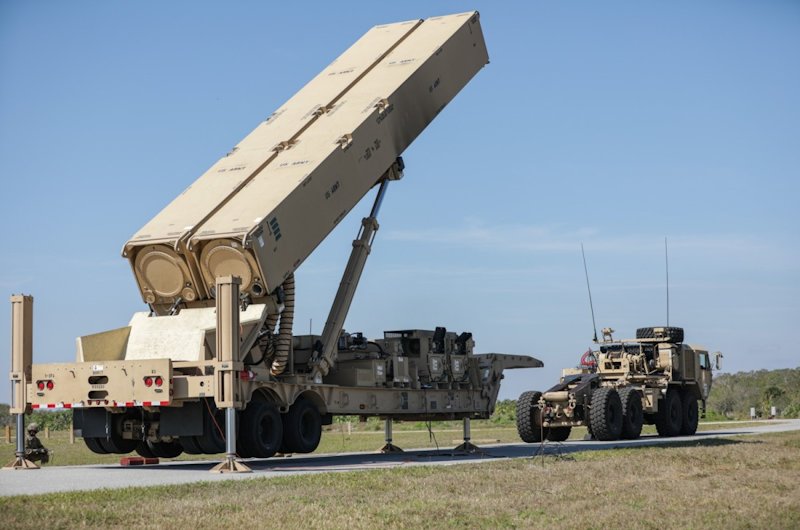
In the interim, the Army is fielding a "Mid-Range Capability (MRC)" system, being a land-based system with the RIM-174 / SM-6 missile and the Tomahawk cruise missile. The Navy SM-6 is a "triple-threat" weapon, capable of long-range anti-air defense, antiship attack, and land-attack -- though it appears the Typhon battery will not have an air-defense radar. However, a Typhon SM-6 could, in principle, be launched and placed under datalink control of an AEGIS cruiser or other platform that could give it anti-air guidance, and the Army is not ignoring the SM-6 as a potential anti-air defense.
BACK_TO_TOP* The US-MLRS rocket system has been widely exported to American allies, and has become something of a standard. Not surprisingly, foreign users have devised their own systems for it.
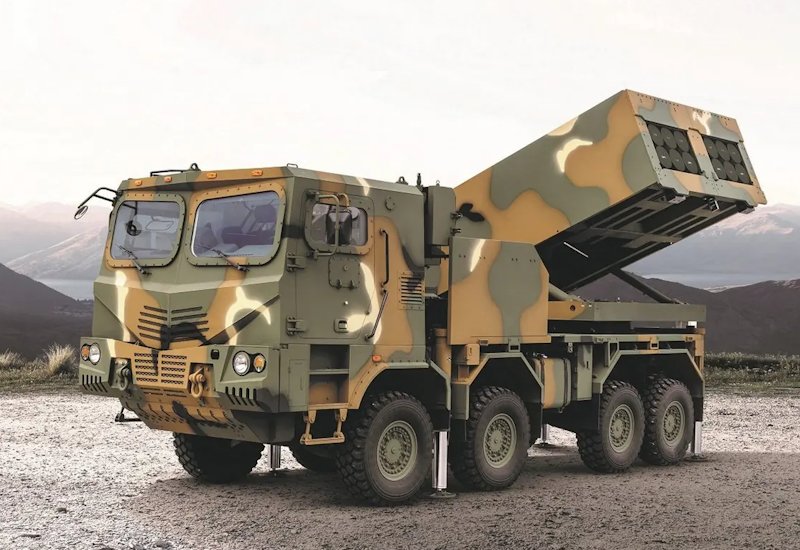
The South Koreans developed their own MLRS launcher, the "K239 Chunmoo", built by Hanwha Aerospace. It was introduced in 2014, being based on a four-axle truck chassis, with an armored cab. Like the M270, it could fire two pods of MLRS missiles. Additional pods were carried on a transporter vehicle using the same chassis. While Chunmoo could in principle fire US-made MRLS / GMRLS / ATACMS pods, it normally fired pods of rockets also made by Hanwha:
Hanwha has developed a 400-millimeter missile with GPS-INS guidance, with two per pod. Hangwha has also developed a missile similar to ATACMS, known as the "Ure (Thunder)" or "Korean Tactical Surface-To-Surface Missile (KTSSM)", designated "CTM-290" for export. It was designed primarily to counter North Korean artillery. It is cheaper and more accurate than ATACMS, but has shorter range.
The Ure was originally designed for fixed-site launch, and then developed for carriage by Chunmoo and other platforms. Originally, maximum range was 180 kilometers (110 miles), but then it was extended to 290 kilometers (180 miles). It has a diameter of 60 centimeters (2 feet), slightly less than that of ATACMS, with one per pod. It uses GPS-INS guidance to perform precision strikes. The Ure has two warhead options: a thermobaric penetrating warhead or a unitary high-explosive warhead. The variant designations and history of the Ure are confusing; apparently it is now in service.
In addition, Hanwha is developing "anti-ship ballistic missile (ASBM)" for the Chunmoo. It will have GPS-INS guidance, with an imaging infrared targeting seeker. Range is given as 160 kilometers (100 miles), but few other details or a schedule are available.
The Chunmoo has been obtained by Saudi Arabia, the United Arab Emirates, and by Poland, with the Poles ordering 288. The Poles also ordered M142 HIMARS but couldn't get enough of them, so they ordered the Chunmoo as well. The Chunmoo system will be mounted on a Polish Jelcz 8x8 vehicle chassis, and equipped with Polish TOPAZ Integrated Combat Management System.
* In 2024, Rheinmetall of Germany and Lockheed Martin introduced a new US-MLRS launch system, the "Global Mobile Artillery Rocket System (GMARS)", based on a Rheinmetall-MAN 8x8 four-axle military truck. It can be loaded with twin US-MLRS pod, as with the M270. It is not clear if any service has adopted it yet.
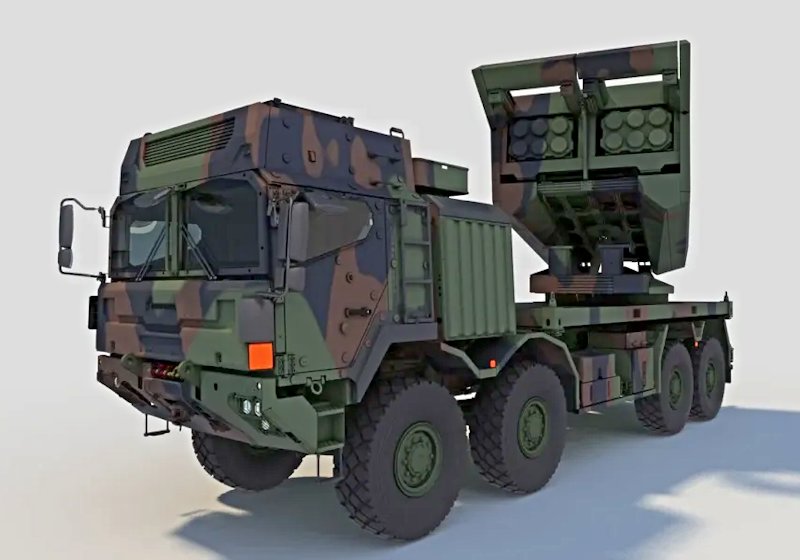
There is talk of using GMARS to fire loads of (guided or unguided) 122-millimeter rockets, or -- possibly -- a ground-launched version of the AGM-158 "Joint Air-to Surface Standoff Missile (JASSM)". Sources mention that the Germans have been working on an "M32 SMART" GMLRS rocket, with a payload of four "SMArt" anti-tank munitions -- which are deployed over a battlefield, floating down on a set of little parachutes, and then firing a penetrating slug into the top of an armored vehicle.
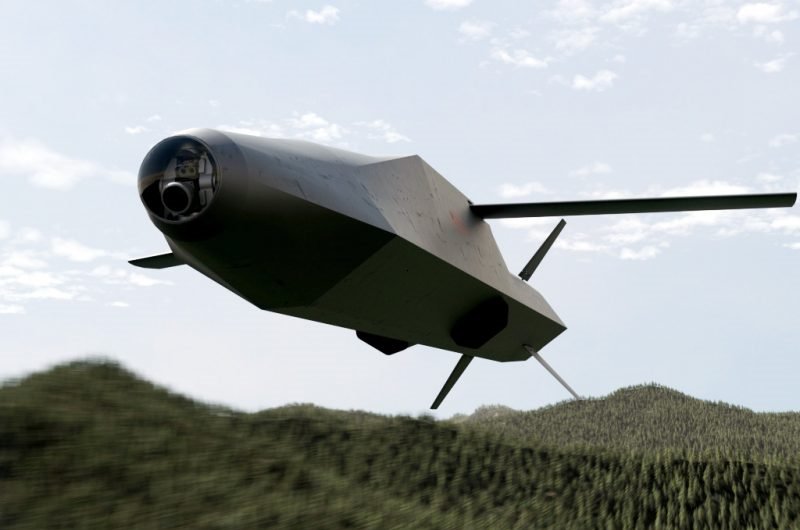
In addition, the European multinational MBDA defense firm is developing a new munition for the US-MLRS launcher family: a cruise missile, the "Joint Fire Support Missile (JFSM)". It will have pop-out wings, a stealthy configuration and turbojet or turbofan propulsion, with high subsonic performance and a range of about 500 kilometers (310 miles). The JFS-M will be 2.6 meters (8 feet 6 inches) in length, with a 1.5-meter (5-foot) wingspan, and a launch mass of 250 to 300 kilograms (550 to 660 pounds). As with PrSM, two will be able to fit into a single US-MLRS pod.
BACK_TO_TOP* The failed MR-1 Mercury-Redstone launch on 21 November 1962 went down in space history as the infamous "4-inch flight". The booster engines ignited, but shut down after the vehicle reached an altitude of 10 centimeters (4 inches). The booster dropped back down intact -- but the escape tower then ignited, blasting off without the capsule but deploying the capsule's recovery parachute.
That left the launch crew in a very bad position, since they had an armed bomb sitting on the launch pad -- and if the wind came up, the parachute would topple the booster. No wind was expected, so they waited until the batteries ran down and the LOX boiled away.
* There weren't a lot of formal sources for this document. It was derived from Wikipedia articles, military sources, and manufacturer's web pages.
* Illustrations credits:
* Revision history:
v1.0.0 / 01 oct 24 (+)BACK_TO_TOP
